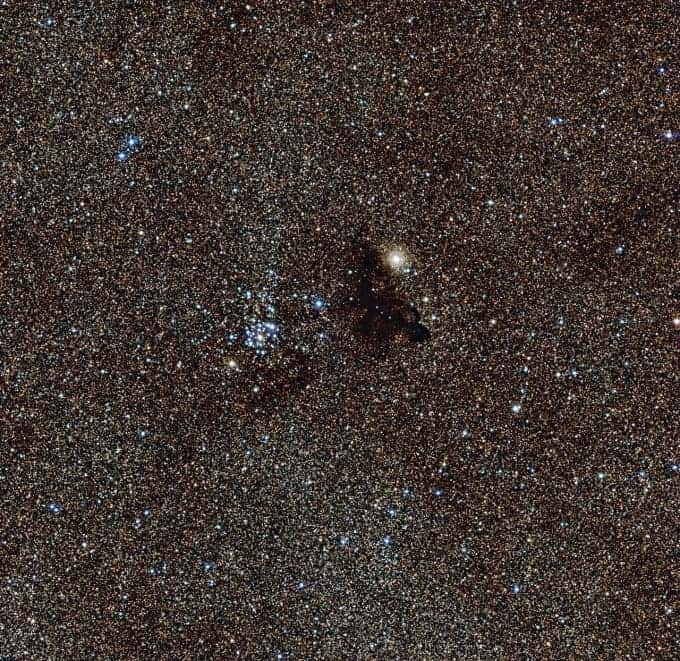A telescope in Chile recently imaged one of the brightest spots at the core of the Milky Way, beautifully illustrating a star cluster and its neighboring dark nebula. The latter offers a stunning contrast for the billions of stars present in this patch of our galaxy.

This fantastic view was made possible using the Wide Field Imager from ESO’s La Silla Observatory in Chile. This particular patch is called the the Large Sagittarius Star Cloud, located in the the constellation of Sagittarius (The Archer), and is one of the richest star fields in the whole sky.
A small, isolated dark area, described as “a drop of ink on the luminous sky” by U.S. astronomer Edward Emerson Barnard, who discovered it in 1913, sits in the middle of the image. This is a dark nebula called Barnard 86, that’s made out of small dust grains that scatter and block starlight, letting the region appear opaque.
The brightest object in the photo is actually a star cluster – a group of gravitationally bound stars that can be by the thousands in number- called NGC 6520.


